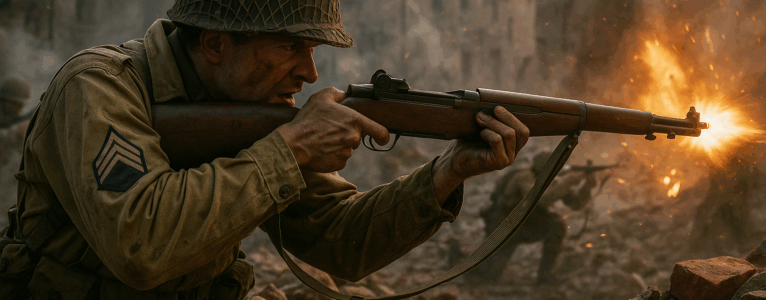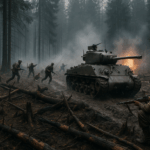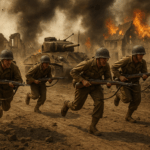The M1 Garand rifle redefined battlefield strategy and remains one of the most respected firearms in military history. Known as “the greatest battle implement ever devised,” as described by General George S. Patton, the M1 Garand’s firing power, durability, and ease of use provided a significant edge during World War II and the Korean War. This article explores the M1 Garand’s fascinating history, innovative design, and enduring legacy as one of America’s most celebrated military rifles.
Origins of the M1 Garand
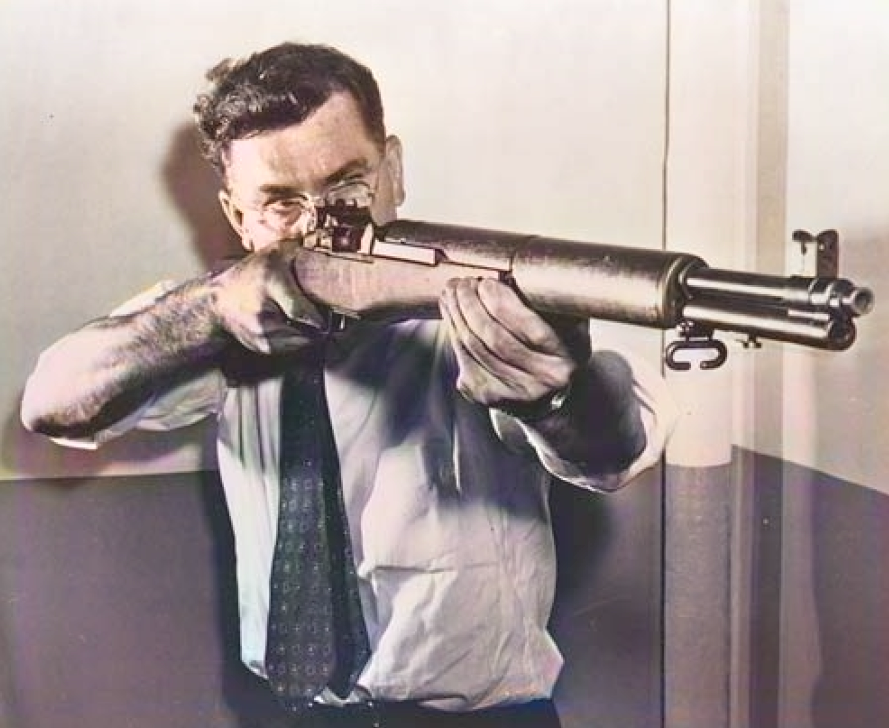
The path to the M1 Garand began with the U.S. Army’s early desire for a faster-firing rifle. By the early 20th century, traditional bolt-action rifles like the Springfield M1903 were beginning to show limitations in modern combat, where rapid-fire capability could mean the difference between victory and defeat. Recognizing this, the U.S. Army sought a semi-automatic design that would allow soldiers to chamber a new round without manually operating the bolt. This requirement led to a lengthy development process and the introduction of a new generation of designers and engineers, with John C. Garand at the forefront.
John Garand, a Canadian-born engineer with a strong mechanical background, joined the Springfield Armory in the 1920s. With a dedicated approach to firearm innovation, Garand worked tirelessly on a new rifle design that could meet the Army’s stringent requirements. His innovative gas-operated mechanism, which harnessed the energy from each shot to automatically chamber the next round, was a novel concept at the time. Through years of testing, trials, and fine-tuning, Garand’s work evolved into a viable prototype, marking the beginning of the revolutionary M1 Garand rifle.
Development Phases and Trials
Developing the M1 Garand involved a series of rigorous tests and trials to ensure it met the U.S. military’s high standards. In the 1920s, the Army evaluated various semi-automatic designs, with each vying to be the new standard-issue rifle. Garand’s early prototypes faced stiff competition from other designs, including the Thompson Autorifle and Pedersen’s toggle-breech rifle. The testing process was grueling, and many designs failed to meet the reliability, weight, and accuracy requirements that military officials demanded.
Garand’s persistence paid off in 1936, when his design was officially selected as the U.S. Army’s new standard-issue rifle, designated the “US Rifle, Caliber .30, M1.” It was a monumental achievement, as this was the first time any military had adopted a semi-automatic rifle as its primary weapon. The M1 Garand’s innovative gas-operated, rotating-bolt system set it apart from competitors, providing unmatched reliability and ease of use. These trials were pivotal, as the rigorous testing ensured that the M1 Garand would stand up to the harsh realities of combat, ultimately proving its worth on the battlefields of World War II.
World War II and the M1 Garand’s Impact
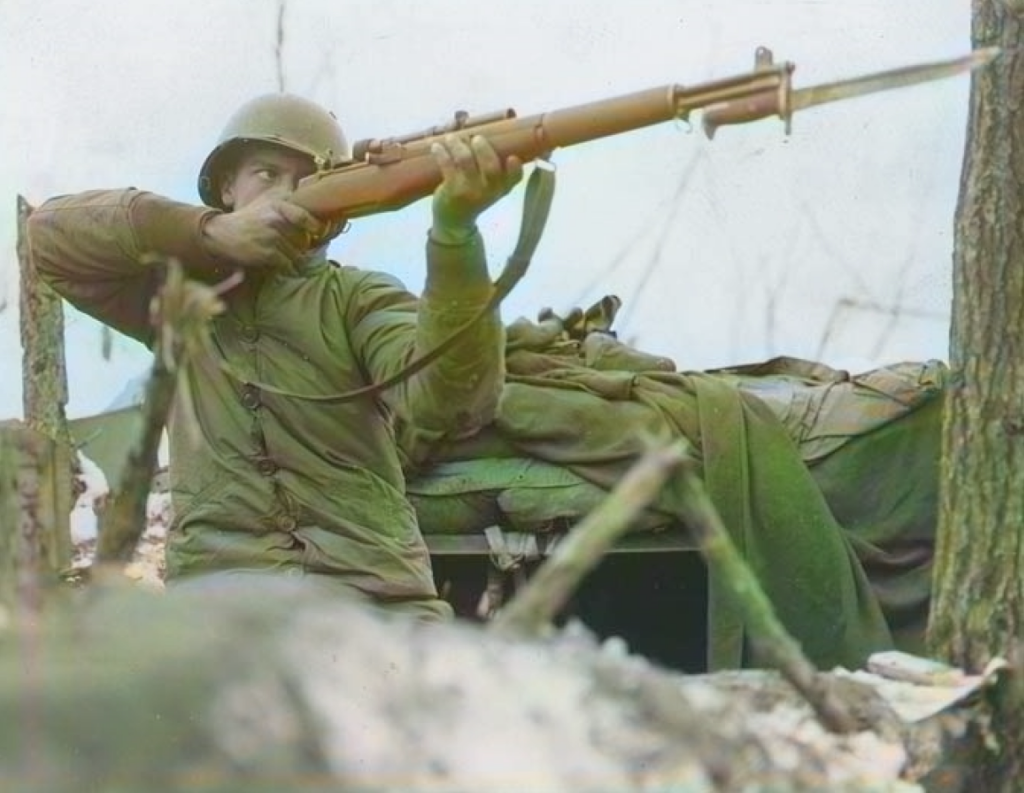
The onset of World War II solidified the M1 Garand’s place in history as an indispensable asset for U.S. forces. Its semi-automatic capability allowed American soldiers to deliver sustained fire, providing a significant advantage over adversaries still using bolt-action rifles. The M1 Garand’s presence was felt in numerous campaigns across Europe, North Africa, and the Pacific, where it became a critical component in both offensive assaults and defensive stands. Its reliability in varied climates and terrains made it an ideal weapon, capable of enduring mud, sand, and extreme weather conditions.
Manufacturing the M1 Garand on a large scale presented its own set of challenges. Springfield Armory and Winchester Repeating Arms were tasked with ramping up production to meet wartime demands. By the height of WWII, hundreds of thousands of M1 Garands were being produced, ensuring that nearly every infantryman was armed with this powerful weapon. The Garand’s rapid-fire ability and eight-round en-bloc clip allowed soldiers to engage effectively without the need to manually reload after each shot. The M1’s role in battles like D-Day, the Battle of the Bulge, and Iwo Jima demonstrated its strategic importance, enabling American forces to hold their ground and push forward against formidable opposition.
Technical Specifications and Innovations
The M1 Garand was groundbreaking in its technical design, setting new standards for military rifles worldwide. Its gas-operated system allowed each fired round to automatically eject the spent cartridge and load the next one, significantly increasing firing rate compared to manually-operated rifles. This semi-automatic capability not only increased lethality on the battlefield but also allowed soldiers to maintain a steady rate of fire without breaking their aim or position. The rifle’s eight-round en-bloc clip, which dropped out of the rifle when empty, enabled a quick reload under pressure, although the characteristic “ping” sound upon ejection occasionally alerted nearby enemies.
With a barrel length of 24 inches and a weight of around 9.5 pounds, the M1 Garand was relatively lightweight for its power and range. It fired a .30-06 caliber round, providing significant stopping power and range, especially in open terrains where accuracy over long distances was essential. Innovations such as the gas system’s “gas port” design, introduced during WWII production, improved reliability and reduced fouling, making the M1 Garand less prone to jamming. Overall, the Garand’s technological advancements made it not only an effective weapon during WWII but also a model for future rifle designs.
M1 Garand’s Role in the Korean War
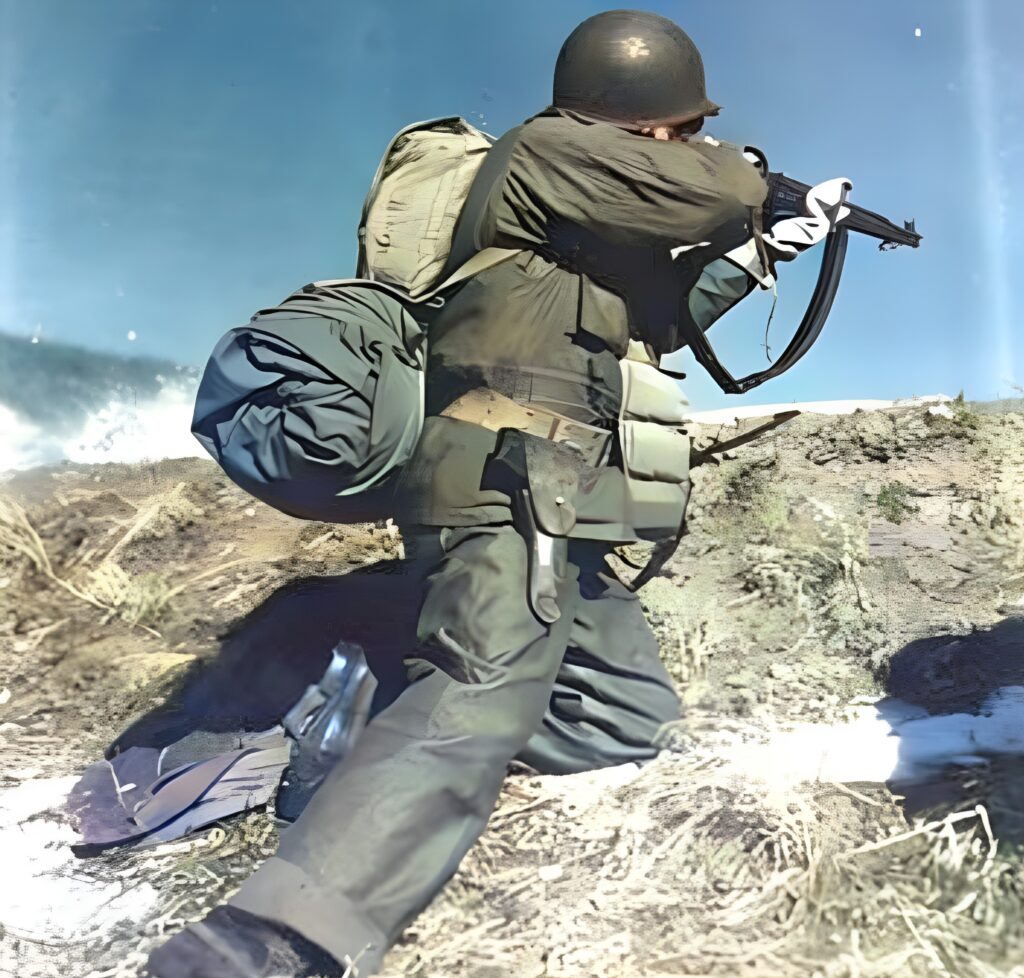
The M1 Garand’s legacy continued in the Korean War, where it again proved indispensable. Korean winters brought some of the coldest conditions ever faced by U.S. troops, and the Garand’s durability was tested to the limits. Despite these harsh environments, the M1 performed admirably, though modifications were made to enhance its usability in extreme cold. A specially designed winter trigger guard was introduced, allowing soldiers to operate the rifle while wearing gloves, preventing frostbite during prolonged engagements.
The mountainous terrain of Korea further underscored the M1 Garand’s strengths. Its range and power provided U.S. forces with an advantage in both defensive and offensive actions. Additionally, the Garand’s durability in severe weather conditions highlighted its reliability, as it continued to perform where other firearms might have faltered. The Korean War cemented the M1’s status as one of the most reliable and effective rifles in American military history, and it continued to be used by allied forces well into the following decades.
Manufacturing and Distribution
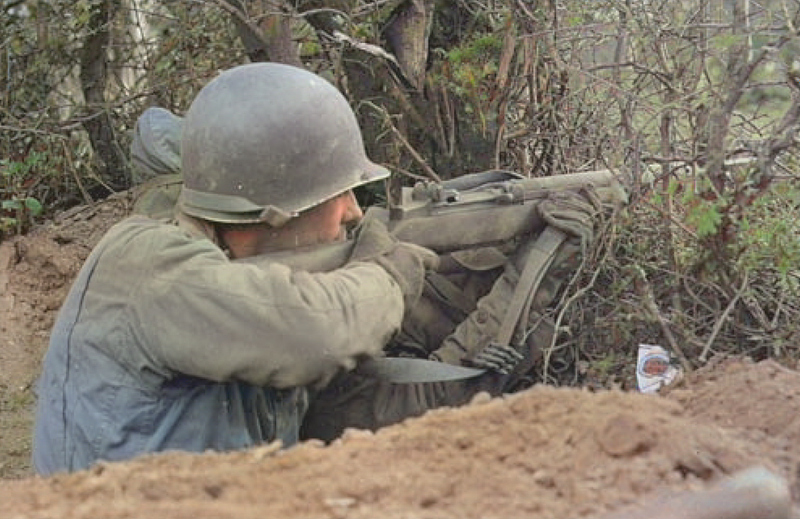
To meet the demands of World War II, the U.S. government turned to both Springfield Armory and Winchester Repeating Arms to produce the M1 Garand in mass quantities. This was an ambitious undertaking, as the rifle’s complex design required precise machining and assembly. By the end of WWII, over 4 million M1 Garands had been produced, equipping nearly every soldier in the U.S. Army and providing additional arms to allied forces around the world. The scale of production required both facilities to innovate, adopting streamlined manufacturing processes to increase output without compromising quality.
Following the war, the demand for M1 Garands persisted, particularly during the Korean War. Contracts were awarded to International Harvester and Harrington & Richardson to supply additional rifles. The M1’s distribution extended beyond the U.S. military as surplus rifles were sent to allied nations under the Military Assistance Program. The M1 Garand’s widespread distribution made it one of the most recognized firearms of the 20th century, serving soldiers across more than 30 countries worldwide and cementing its legacy as a symbol of American ingenuity and strength.
Key Challenges and Solutions

The M1 Garand was a groundbreaking design, but like all innovations, it faced challenges. Early models experienced issues with clip ejection and magazine feeding. One frequent complaint was the infamous “M1 thumb,” caused by the bolt snapping forward unexpectedly during loading. Additionally, the initial “gas trap” system proved problematic, as it was prone to fouling and difficult to maintain in the field. Recognizing these issues, Garand and his team continuously improved the rifle’s design, addressing mechanical flaws to enhance its reliability.
The transition to a “gas port” design was a significant improvement, tapping gas through a port in the barrel rather than from a gap at the muzzle. This change eliminated many of the jamming issues and improved the M1’s overall function, particularly under harsh battlefield conditions. These refinements, combined with Garand’s simple but robust design philosophy, ensured the M1 Garand became one of the most reliable rifles in American military history.
The M1 Garand’s Influence on Modern Firearms
The M1 Garand’s revolutionary design inspired many of the rifles that followed. Its semi-automatic, gas-operated mechanism set a precedent that influenced the development of the M14, which became the U.S. military’s standard issue rifle after the Garand. The M14 retained many of the M1’s features, including the powerful .30 caliber round, but added a 20-round detachable magazine and select-fire capability, allowing soldiers to switch between semi-automatic and fully automatic fire.
Beyond the M14, the M1 Garand’s influence can be seen in numerous military rifles worldwide, as other nations adopted semi-automatic and gas-operated designs for their own infantry. Countries like Germany and the Soviet Union developed similar rifles during WWII and afterward, with the SVT-40 and the G43 echoing elements of Garand’s work. Today, the legacy of the M1 Garand lives on, as its design principles continue to inform modern battle rifles used by militaries around the world.
Transition to Civilian Use
Following its distinguished military service, the M1 Garand made its way into civilian hands, thanks to the Civilian Marksmanship Program (CMP). This U.S. government initiative allowed WWII and Korean War veterans, as well as civilian firearm enthusiasts, to purchase surplus M1 Garands, giving them a chance to own a piece of history. The CMP’s efforts ensured that the Garand remained accessible and maintained as a symbol of American heritage.
The M1 Garand remains popular among competitive shooters due to its accuracy, power, and historical value. It is frequently used in shooting matches and historical reenactments, where its durability and precision continue to impress. For collectors, the M1 Garand holds immense value, not only as a functional firearm but as a tangible connection to pivotal moments in American military history.

The greatest battle implement ever devised
– General George S. Patton Jr.
f
Sniper and Experimental Variants
The M1 Garand was adapted for various specialized uses, including sniper configurations such as the M1C and M1D. These variants featured scopes mounted to the side of the receiver to avoid interference with the top-loading system, allowing for effective long-range engagements. The sniper variants saw action in WWII, Korea, and even Vietnam, where their range and accuracy proved advantageous in sniper roles.
Springfield Armory also experimented with different M1 models to improve its functionality. The T20 series, for instance, explored the use of BAR magazines for increased capacity and select-fire capability, while the T26 prototype was a shortened carbine model for close-quarters combat. Though many of these experimental models were not widely adopted, they demonstrate the versatility of the Garand’s design and the ongoing efforts to improve its effectiveness in various combat scenarios.
Iconic Accessories for the M1 Garand
In addition to its innovative design, the M1 Garand was accompanied by various accessories that enhanced its use in combat. Early on, the rifle was paired with the M1905 bayonet, featuring a long, 16-inch blade. Later in WWII, a shorter 10-inch M1 bayonet was introduced, making it more maneuverable. Soldiers also relied on the M1907 leather sling, carried over from the M1903 Springfield, for additional stability and ease of transport.
Another crucial accessory was the cartridge belt, which allowed soldiers to carry multiple eight-round en-bloc clips, ensuring they could reload quickly in combat. These accessories, including specialized belts, bayonets, and slings, made the M1 Garand more adaptable to the varied combat conditions encountered during WWII and the Korean War.
Maintenance and Storage Solutions
After WWII, surplus M1 Garands were stored using a method known as “canning,” where rifles were hermetically sealed in containers with desiccants to prevent corrosion. This technique allowed the rifles to remain combat-ready for decades, making them available for rapid deployment if needed. Stored rifles were often used in later conflicts or provided to allied nations as part of military assistance programs.
This storage method preserved the M1 Garands in nearly new condition, allowing collectors and enthusiasts in later years to acquire rifles that had been maintained meticulously. The Garand’s longevity, coupled with these advanced preservation techniques, has ensured that many of these historic rifles survive in excellent condition to this day.
Legacy and Popularity of the M1 Garand Today
The M1 Garand’s legacy endures as a symbol of American strength and innovation. Veterans, collectors, and historians alike revere the rifle for its role in shaping the outcome of WWII and its contributions to modern firearm technology. Today, the M1 Garand remains a cherished piece of military history, featured in historical reenactments, competitive shooting events, and museums worldwide.
From its exceptional design to its impact on soldiers’ morale, the M1 Garand is not just a weapon but an icon. Its contributions to military tactics, advancements in firearm engineering, and enduring popularity among firearm enthusiasts continue to make it one of the most celebrated rifles in American history.
Conclusion
The M1 Garand’s historical impact is undeniable. From its groundbreaking role in World War II to its lasting influence on modern firearms, the M1 exemplifies the power of innovation in military technology. As an enduring symbol of American strength and resilience, the M1 Garand will continue to be celebrated for its contributions to military history and its role in helping shape the outcome of pivotal conflicts in the 20th century.

